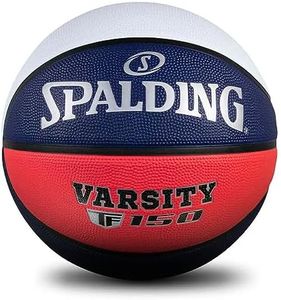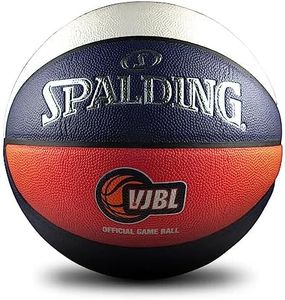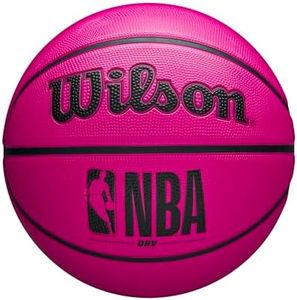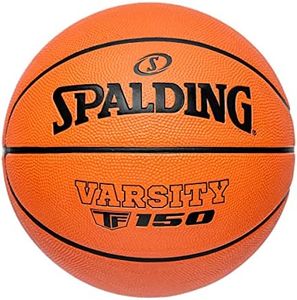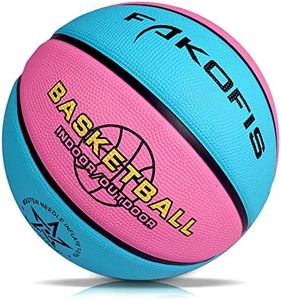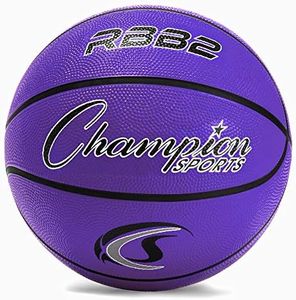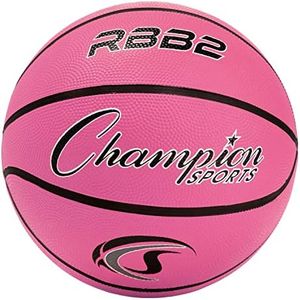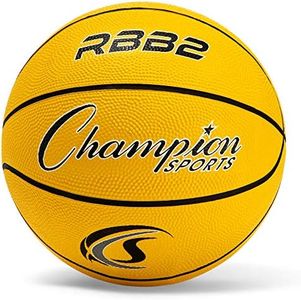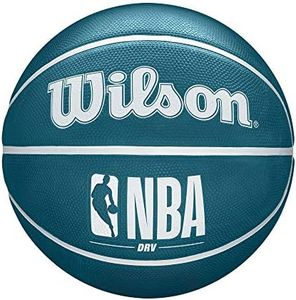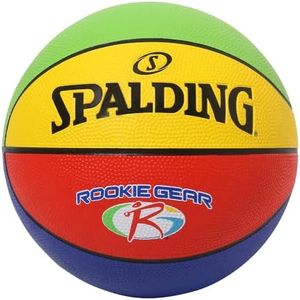We Use CookiesWe use cookies to enhance the security, performance,
functionality and for analytical and promotional activities. By continuing to browse this site you
are agreeing to our privacy policy
10 Best Junior Basketballs
From leading brands and best sellers available on the web.Buying Guide for the Best Junior Basketballs
Choosing the right junior basketball is important because it can greatly influence how a young player develops their skills and enjoys the game. The right ball should feel comfortable in their hands, be easy to control, and suit their age and playing environment. When picking out a basketball for a junior player, you should consider several factors that make a big difference in both enjoyment and skill development.SizeBasketball size refers to the circumference of the ball, which directly affects how comfortable and manageable it is for young players. Sizes usually range from smaller for very young kids (size 3 or 5) to standard youth sizes (size 6). Younger children (ages 5-8) usually find smaller balls easier to hold and shoot, while pre-teens (ages 9-12) can move up to slightly larger balls. It's important to match the ball size with the age and hand size of the child to help them control the ball confidently, learn shooting form, and develop proper technique.
WeightThe weight of a basketball impacts how easily a player can dribble, pass, and shoot. Lighter balls are generally best for younger kids, as they allow for better handling and prevent strain or injury from using a too-heavy ball. As children grow and build strength, moving up to a ball with more typical youth weight can help prepare them for older age groups and standard competitive play.
MaterialJunior basketballs are commonly made from rubber, composite (synthetic leather), or genuine leather. Rubber balls are durable and affordable, making them a great choice for outdoor play. Composite balls offer a softer, more comfortable grip and are suitable for both indoor and outdoor courts. Leather balls are rarely used for juniors due to their higher price and need for indoor use. To decide which material is best, think about where the ball will mostly be used and how often the child will play.
Grip and TextureGrip and texture refer to how easy it is to hold onto and control the ball. Balls with deeper grooves and a pebbled surface offer better grip, especially for smaller hands learning the basics. If the ball is mostly for indoor use, a smoother surface can be fine, but for outdoor courts, a rougher texture helps maintain grip despite dirt and moisture. Observing how secure the ball feels when the child is dribbling or catching can help you choose the right grip.
BounceBounce describes how well the ball rebounds off the floor, which affects how predictable and fun the game feels. Too much or too little bounce can make practicing hard or frustrating for a junior player. A properly balanced ball should rise to about waist height when dropped from shoulder height. Testing the bounce before buying can show if the ball is appropriate for your junior player's needs and playing surface.
Visibility and ColorVisibility and color might seem less important, but they can make a big difference for young players. Bright, contrasting colors help kids track the ball better, boosting confidence and performance. Some children might also be more motivated to play if they like the way their basketball looks, so it's okay to let them have a say in choosing colors or patterns.
